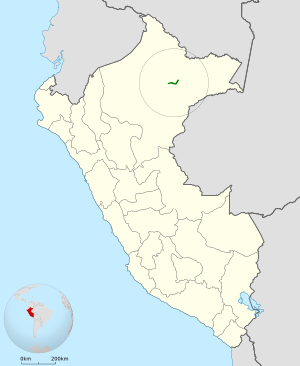Iquitos gnatcatcher facts for kids
Quick facts for kids Iquitos gnatcatcher |
|
|---|---|
| Scientific classification | |
| Genus: |
Polioptila
|
| Species: |
clementsi
|
 |
|
The Iquitos gnatcatcher (Polioptila clementsi) is a small bird that belongs to the Polioptilidae family. It was first discovered and described in 2005. This special bird is only found in one place: the Allpahuayo-Mishana National Reserve in Peru, near the city of Iquitos.
Contents
About the Iquitos Gnatcatcher
How It Got Its Name
The Iquitos gnatcatcher is part of a group of birds called the Guianan gnatcatcher (Polioptila guianensis) complex. When it was first found, scientists debated if it was a new species or just a type of Guianan gnatcatcher. In 2006, most bird experts agreed it was a unique species.
Its scientific name, clementsi, was chosen to honor a famous American bird expert named James F. Clements.
What It Looks Like
Scientists have mostly seen young Iquitos gnatcatchers. This means they don't have a full description of what adult birds look like. However, the adults they have seen look very similar to the young ones.
These birds are about 11 cm (4.3 in) long. They weigh around 5 to 6 g (0.18 to 0.21 oz), which is very light! The male bird has a dark gray back, from its head to its tail. It has a thin, broken white ring around its eyes. Its throat and chest are a medium gray, and its belly is white. The feathers in the middle of its tail are black, while the outer feathers are mostly white.
Where It Lives
The only place where the Iquitos gnatcatcher is known to live is the Allpahuayo-Mishana National Reserve. This reserve is located west of Iquitos, Peru. The area is a mix of two types of forests: the Napo moist forest and the Iquitos várzea forest. The land there is about 150 m (490 ft) above sea level.
Iquitos Gnatcatcher Behavior
What It Eats
We don't know a lot about what the Iquitos gnatcatcher eats. But like other gnatcatchers, it probably eats mostly insects. It actively looks for food in the top parts of trees. It often joins groups of different bird species that are also looking for food together. It usually picks insects off the ends of branches. Sometimes, it will fly out to catch insects in the air.
Reproduction and Life Cycle
Scientists have not yet found the nests or eggs of the Iquitos gnatcatcher. This means we don't know much about how they raise their young or their breeding habits.
How It Sounds
The song of the Iquitos gnatcatcher has two clear parts. You can listen to an example of its song online here. It also makes many different kinds of calls.
Its Future
The Iquitos gnatcatcher is in danger. Some organizations, like BirdLife International, don't consider it a separate species. Because of this, its conservation status hasn't been officially checked by the IUCN (International Union for Conservation of Nature).
However, its entire known home is only about 2,000 ha (7.7 sq mi). Logging, which is cutting down trees, is allowed in this area. There are fewer than 250 adult Iquitos gnatcatchers left. Also, the special white-sand forest where it lives is slowly disappearing. These facts mean that the Iquitos gnatcatcher meets the requirements to be called "Critically Endangered." This is the highest risk category for animals facing extinction.
See also
 In Spanish: Perlita de Iquitos para niños
In Spanish: Perlita de Iquitos para niños

